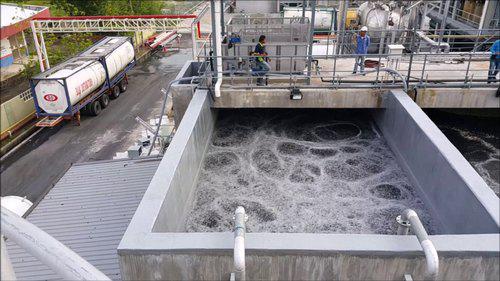Common Misconceptions of MBBR Biofilm Reactor Technology for Wastewater Treatment

When looking for information about a product or service you’re interested in, it can occasionally be difficult to find the answers to your specific questions. Sometimes you can’t really find anything and you end up making inferences based on what you did find. Sometimes, those inferences can be partially or completely wrong. In this article, we will provide a brief description of the MBBR biofilm reactor process and discuss common misconceptions of this technology for wastewater treatment.
Since you’re here, you’ve likely been looking into a moving bed biofilm reactor for a wastewater treatment system. Maybe in your quest for answers about MBBR, you have come across some conflicting information or just could not quite find what you were looking for.
This article, can help clarify four of the main misconceptions of the MBBR moving bed biofilm reactor technology.
You might know this already, but let’s recap:
A moving bed biofilm reactor is a dynamic fixed-film biological treatment process that combines together the benefits of an activated sludge process with that of a trickling filter. Carrier media (that can come in a variety of shapes and sizes) are where the most important biofilm resides. These carriers are designed to maximize their interior surface area so that greater amounts of biofilm can grow. The biofilm has very high concentrations of bacteria and protozoa and is kept thin within the carriers to avoid excess clogging. Using either a diffusing aeration system or a mixer in the case of anaerobic or anoxic decomposition, the carriers are kept aloft within the reactor. The constant motion encourages improved contact between the biofilm and the substrate within the effluent solution. The bacteria absorb and metabolize the organic materials in the effluent and produce some manner of natural elements and compounds depending on whether the process is aerobic, anaerobic, or anoxic.
Following aeration, the effluent is pumped into a clarifying tank where the solids and liquids separate and the fluid supernatant is sent to tertiary treatment while the sludge in the bottom of the clarifier is sent to a separate sludge holding tank.
So, that’s how the MBBR biofilm reactor process works. With that out of the way, we can talk about four main misconceptions people might have about this biofilm reactor technology.
* It can’t handle high loads
Actually, one of the best parts about the MBBR biofilm reactor process is how flexible it is, with minimum operator intervention. The highly concentrated biofilm, that remains consistently within the tank, self adjusts to react to and metabolize the increased load of sewage.
* It’s not resistant to toxic shock
You tend to find statements like this in papers and on websites advocating for some other biological treatment solution. It’s not true. MBBR biofilm reactor systems are actually better able to handle toxic shock than a lot of other biological processes for the same reasons that they are able to handle variations in contaminant loadings.
* They lose media
Okay. This one is on the engineers. The idea of a fixed-film process is that the biofilm stays in the tank. This is what sets the MBBR biological process apart from traditional activated sludge processes. On occasion, there have been reports of the carrier media getting out of the reactor. Inside an MBBR biofilm reactor, there is supposed to be a sieve screen mounted to the outlet that prevents this from happening. But, if the sieve is not sized correctly (or installed correctly in some cases), the media can slip through. This problem can be avoided entirely if you partner with a good company with competent designers that make sure to double check things like making sure the mesh openings in the sieve aren’t bigger than the carriers.
I should also point out that a lot of water treatment companies use plastic for their carriers. It’s cheap and they’re easy to make. But based on its shape, sometimes they can break apart, cause clogging, or get washed out through the sieve. Again though, if these carriers are well designed this will not be a problem.
* Fixed-film biological systems smell
Sure. If they’re stagnant. There are plenty of fixed-film systems that have a bed of biofilm coated media and the effluent is poured over it. The trickling filter comes to mind. The media sits in a tank in the sun while liquids full of organic materials are sprayed over it. That’s definitely going to create an odor issue, especially on hot days.
However, the MBBR biofilm reactor does not have that problem. It’s a dynamic fixed-film system. The aeration system keeps the fluid and the media moving around in the tank constantly. If it doesn’t have time to sit and stagnate, then it doesn’t smell, same as an activated sludge system.
There you have it. Four misconceptions about MBBR in wastewater treatment. Hopefully, this clears things up for those that need it.
However, if you still need clarification or if you didn’t see an answer to one of your questions presented here, contact Genesis Water Technologies, Inc, a global water & wastewater treatment solutions specialist. We can be reached at 1-877-267-3699 in the USA or you can reach us through email at customersupport@genesiswatertech.com.

